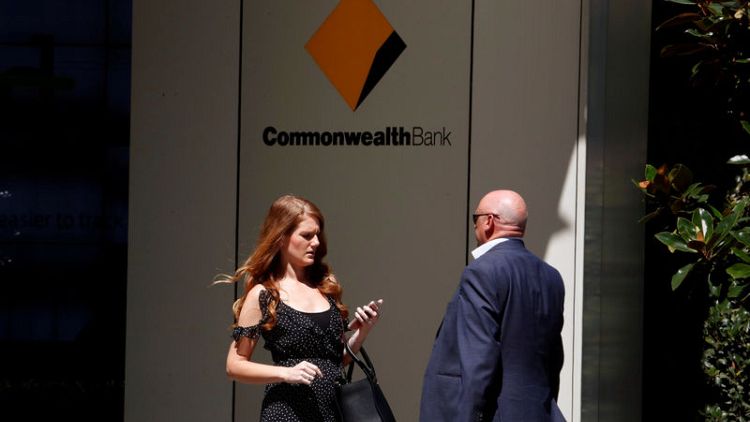By Paulina Duran and Byron Kaye
SYDNEY (Reuters) - Australia's largest lender, Commonwealth Bank of Australia <CBA.AX>, told a powerful misconduct inquiry it double-charged interest to thousands of customers due to a coding error, the second time it has used that reason to explain systemic problems.
The bank's admission at the banking Royal Commission on Thursday adds to numerous instances where the banking mammoth's actions have been found questionable in recent months, and follows a scathing report by the banking regulator that found a widespread sense of complacency at the bank.
The inquiry heard the bank had charged over 2,500 customers interest rates of over 33 percent per annum for overdraft facilities between about 2013 and 2017 - double the 16 percent it had advertised.
It had refunded A$2.7 million (1.5 million pounds) since customers first complained in 2013 but it had failed to report the issues with the corporate regulator until recently, the inquiry heard. Some customers waited more than two years to be reimbursed.
"I'm struck by the fact that this was observed, found, thought to be solved - but not. It's the 'but not' that is what is troubling me," the former judge heading the quasi-judicial inquiry Kenneth Hayne said.
The revelation is another blow to an institution already reeling from multiple scandals and comes after the Australian Prudential Regulatory Authority (APRA) hit the Sydney-based lender with an extra A$1 billion capital requirement until it fixes its governance problems.
Clive van Horen, who headed the bank's small business unit at the time, told the inquiry he intervened to delay refunds to some customers last year to avoid bad publicity since it would have coincided with regular hearings run by the government.
"I appreciate if you are one of those customers affected and you are waiting for a refund it's very material to you, however it was ... a very small issue in the scheme of things," Van Horen said.
"I thought the risk of putting out letters right into the House of Reps hearing where these letters would potentially get picked up and reported in a way which was ... factually wrong (justified the delay)," he added, referring to the lower house of parliament where bank bosses face regular hearings.
The cause of the problem was a "coding error" where the bank's computer system failed to account for all customer circumstances, Van Horen said.
Less than halfway into its year-long investigation, the Royal Commission has already uncovered serious transgressions by the country's four largest banks: CBA, Westpac Banking Corp <WBC.AX>, Australia and New Zealand Banking Group Ltd <ANZ.AX> and National Australia Bank Ltd <NAB.AX>.
Since the investigation began, they have lost a combined A$31 billion in market value as investors sold off shares, and their reputations have been shattered.
But CBA has been the worst hit, as it also deals with a lawsuit by Australia's financial intelligence agency for alleged breaches of money laundering laws that allowed criminals and terror financiers to launder millions of dollars through its accounts.
The bank has admitted that over 50,000 transactions were in breach but said a "coding error" caused the bulk of the breaches. Since then, its CEO and four other senior executives have left the bank, in one of the worst governance crises in the bank's history.
Earlier this month, CBA was also forced to reveal it lost the records of almost 20 million accounts and decided not to inform its customers, while a media report this week uncovered that retail staff had manipulated thousands of children's accounts to earn bonuses, a practice the bank confirmed and said had ended in 2013.
(Reporting by Paulina Duran and Byron Kaye; Editing by Christopher Cushing)



